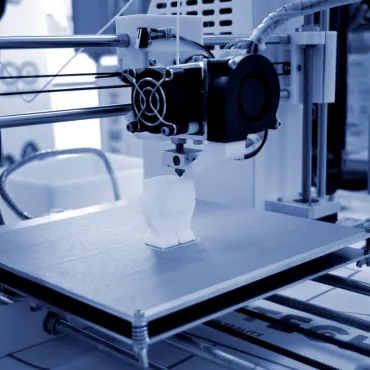Design:
The process begins with creating a 3D model using computer-aided design (CAD) software. The design can be either an original creation or a pre-existing model.
FDM (Fused Deposition Modeling) is a widely used 3D printing technology that operates on a filament-based system to fabricate physical objects. The process begins with designing a 3D model using computer-aided design (CAD) software or obtaining an existing model. The 3D model is then sliced into horizontal layers using specialized slicing software.
To initiate the printing process, the FDM printer needs to be prepared. This involves leveling the build plate and ensuring the nozzle is clean. The printer employs thermoplastic filaments, such as PLA or ABS, which are fed into a heated nozzle known as the extruder. The filament is heated to a melting point, transforming it into a semi-liquid state.
Layer by layer, the printer deposits the melted filament material onto the build plate. The extruder nozzle moves along the predetermined paths, following the instructions derived from the sliced model. As each layer is deposited, it rapidly cools and solidifies, adhering to the previous layer to gradually form the final object.
FDM 3D printing offers a versatile and accessible means of producing functional prototypes, custom parts, and intricate models. The process enables the creation of objects with varying levels of detail and can accommodate different thermoplastic materials to meet specific requirements. FDM technology has found applications across numerous industries, including manufacturing, engineering, healthcare, education, and design.

